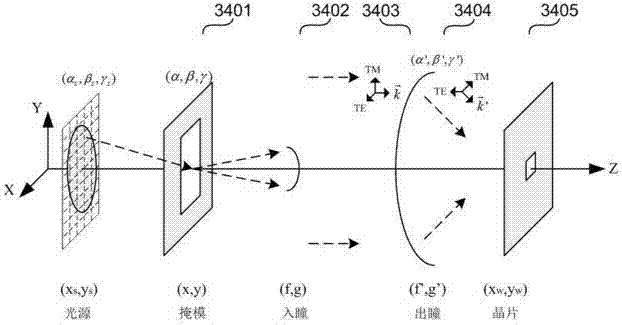Light-source optimization method adopting compressed sensing technology
A light source optimization and compressed sensing technology, applied in microlithography exposure equipment, photolithography process exposure devices, etc., can solve problems such as unfavorable improvement of lithography imaging contrast, unfavorable manufacturing, complex light source patterns, etc.
- Summary
- Abstract
- Description
- Claims
- Application Information
AI Technical Summary
Problems solved by technology
Method used
Image
Examples
Embodiment
[0148] Such as image 3 Shown is a schematic diagram of the optimized light source pattern, mask pattern and its imaging in the photoresist at the best focal plane under the rated exposure amount obtained by the traditional conjugate gradient method. 301 is an optimized light source pattern obtained by using the traditional conjugate gradient method, white represents the luminous area, black represents the non-luminous area, and the optimization time is 1.73 seconds. 302 is the mask pattern used in the simulation, which is also the target pattern, white represents the opening area, black represents the light blocking area, and its critical dimension is 45nm. Since the present invention relates to a light source optimization method, the mask pattern remains unchanged during the light source optimization process. 303 is to use 301 as the light source and 302 as the mask. When the exposure amount change and the defocus effect are not considered, the image is formed in the photor...
PUM
 Login to View More
Login to View More Abstract
Description
Claims
Application Information
 Login to View More
Login to View More - Generate Ideas
- Intellectual Property
- Life Sciences
- Materials
- Tech Scout
- Unparalleled Data Quality
- Higher Quality Content
- 60% Fewer Hallucinations
Browse by: Latest US Patents, China's latest patents, Technical Efficacy Thesaurus, Application Domain, Technology Topic, Popular Technical Reports.
© 2025 PatSnap. All rights reserved.Legal|Privacy policy|Modern Slavery Act Transparency Statement|Sitemap|About US| Contact US: help@patsnap.com



